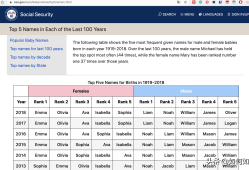愚人节的来历英语介绍
- 命理
- 2022-12-24
- 11
愚人节的来历英语介绍 愚人节的来历英语介绍 愚人节的来历英语介绍 2016-02-25 浏览:分享人:方邦茂手机版"The first of April is the day we remember what we are the other 364 days of the year。"——Mark TwainHow do you think April Fools' Day originated? Did some joker in biblical times decide to switch the frankincense and the myrrh? Was there a historic epidemic of spring fever-tomfoolery in a tiny Finnish town in the early1800s? Did a New Yorker in 1910find a cockroach in his coffee cup and decide to recreate the experience for his officemate, thereby sparking a famous April 1lawsuit?In a convincing testimonial to the saying that truth is stranger than fiction, we'll tell you the story, or at least present the most viable theory, of how April Fools' Day came to be。
Once upon a time, back in 16th-century France, before computers, people celebrated New Year's Day on March 25,the advent of spring。 It was a festive time。 They partied steadily until April 1564,when the calendar reformed and became Gregorian, King CharlesIX proclaimed, perhaps pompously, that New Year's Day should be celebrated on January 1instead of in the spring。 Diehard conservatives resisted the change (or perhaps didn't hear about it due to the absence of e-mail)and continued to celebrate New Year's from March 25to April this period of spring festivity, the more flexible French mocked the rigid revelers by sending them foolish gifts and invitations to non-existent parties。
The victim of an April Fools' Day prank was called a "poisson d'avril," or an "April fish," because at that time of year, the sun was leaving the zodiacal sign of Pisces。 April Fools' Day hit its stride (avoiding the banana peel)in England in the 18th century, and was brought to colonial America by the English, Scottish, and French。 No fooling。April Fools' Day:An Unsolved History The first of April, some do say, Is set apart for All Fools' Day。 But why the people call it so, Nor I, nor they themselves do know。
But on this day are people sent On purpose for pure merriment。——Poor Robin's Almanac (1790)OK, who started it? Did the first Fools come fromFrance, England, Mexico, Sweden or India? The truth, as in any good mystery, lies hidden in the shadows of time。 Some say that April Fools Day began in many parts of the world at the same time, in celebration of the spring equinox。 Pranks were a big part of even the most boring equinox parties, everywhere from Sweden to India。 Others argue that the modern April Fool's Day followed the adoption of are formed calendar in France circa 1564。
In medieval times, the octave of New Year's began on March 25with the eight days of festivities ending on April the reform of the calendar under Charles IX, New Year's Day was moved from April 1to January to the slowness of "sandal-net" communication back then and general resistance to change, the January 1date was not fully accepted for several years。 T hose traditionalists who clung to April 1as New Year's Day were scoffed at as "fools" and sent fake party invitations and prank gifts。 Widespread observance in England began in the 18th century。
The English, Scotch and French introduced the custom to their colonies in America。 One of our forefathers' favorite jokes was to send someone on a "fool's errand。" For example, onemight have been asked to go out and obtain a copy of "The History of Adam's Grandfather," or bring back some "sweet vinegar。" In Scotland, April Fools' Day is 48 hours long。 The second day is called Taily Day and is dedicated to pranks involving the buttocks。 Taily Day's gift to posterior posterity is the still-hilarious "Kick Me" sign。
The "foolish" tradition is celebrated in Mexico, too, but on a different day and for different reasons。" El Dia de los Inocentes," which is December 28,was set aside as a day for Christians to mourn Herod's slaughter of innocent children。Over time, the tone of that "unluckiest of days" has evolved from sadness to good-natured trickery。 Even the media join the fun, often running bogus news stories and radio reports。 We may never learn the true origin of April Fools Day。However, the deeper question facing us today is, "What's the best gag I can pull off?"It's Another New Year……but for what reason?"Happy New Year!" That greeting will be said and heard for at least the first couple of weeks as a new year gets under way。
But the day celebrated as NewYear's Day in modern America was not always January 1。The celebration of the new year is the oldest of all holidays。 It was first observed in ancient Babylon about 4000years ago。 In the years around 2000BC,Babylonians celebrated the beginning of a new year on what is now March 23,although they themselves had no written calendar。Late March actually is a logical choice for the beginning of a new year。 It is the time of year that spring begins and new crops are planted。
January 1,on the other hand, has no astronomical nor agricultural significance。 It is purely arbitrary。The Babylonian new year celebration lasted for eleven days。 Each day had its own particular mode of celebration, but it is safe to say that modern New Year's Eve festivities pale in comparison。The Romans continued to observe the new year on March 25,but their calendar was continually tampered with by various emperors so that the calendar soon became out of synchronization with the sun。In order to set the calendar right, the Roman senate, in 153BC,declared January 1 to be the beginning of thenew year。
But tampering continued until Julius Caesar, in 46BC,established what was come to be known as the Julian Calendar。 It again established January 1 as the new year。 But in order to synchronize the calendar with the sun, Caesar had to let the previous year drag on for 445days。Although in the first centuries AD the Romans continued celebrating the new year, the early Catholic Church condemned the festivities as paganism。 But as Christianity became more widespread, the early church began having its own religious observances concurrently with many of the pagan celebrations, and New Year's Day was no different。
New Years is still observed as the Feast of Christ's Circumcision by some denominations。During the Middle Ages, the Church remained opposed to celebrating New Years。 January 1has been celebrated as a holiday by Western nations for only about the past 400years。Other traditions of the season include the making of New Year's resolutions。 That tradition also dates back to the early Babylonians。 Popular modernresolutions might include the promise to lose weight or quit smoking。 The early Babylonian's most popular resolution was to return borrowed farm equipment。
The Tournament of Roses Parade dates back to that year, members of the Valley Hunt Club decorated their carriages with flowers。 It celebrated the ripening of the orange crop in California。Although the Rose Bowl football game was first played as a part of the Tournament of Roses in 1902,it was replaced by Roman chariot races the following year。 In 1916,the football game returned as the sports centerpiece of the festival。The tradition of using a baby to signify the new year was begun in Greece around was their tradition at that time to celebrate their god of wine, Dionysus, by parading a baby in a basket, representing the annual rebirth of that god as the spirit of fertility。
Early Egyptians also used a baby as a symbol of rebirth。Although the early Christians denounced the practice as pagan, the popularity of the baby as a symbol of rebirth forced the Church to reevaluate its position。 The Church finally allowed its members tocelebrate the new year with a baby, which was to

















